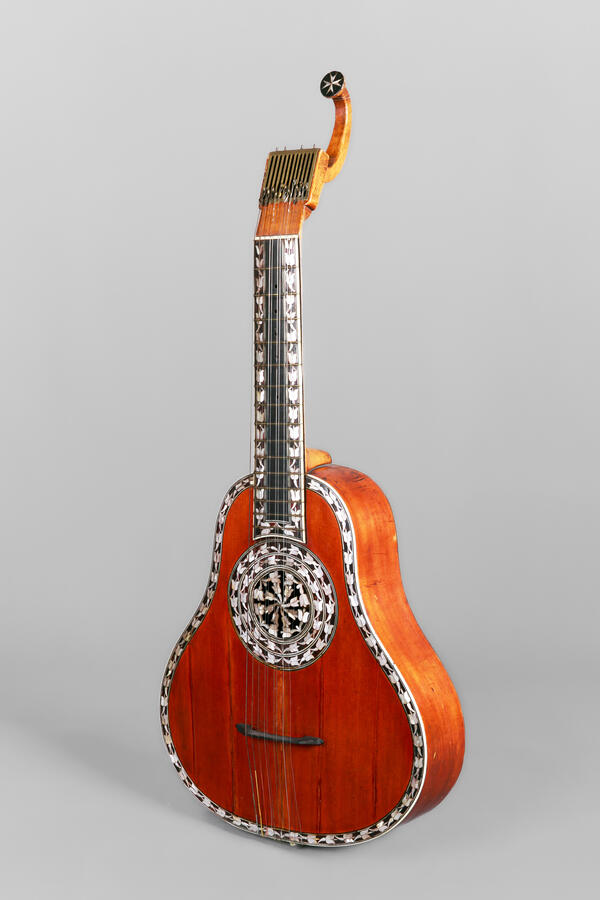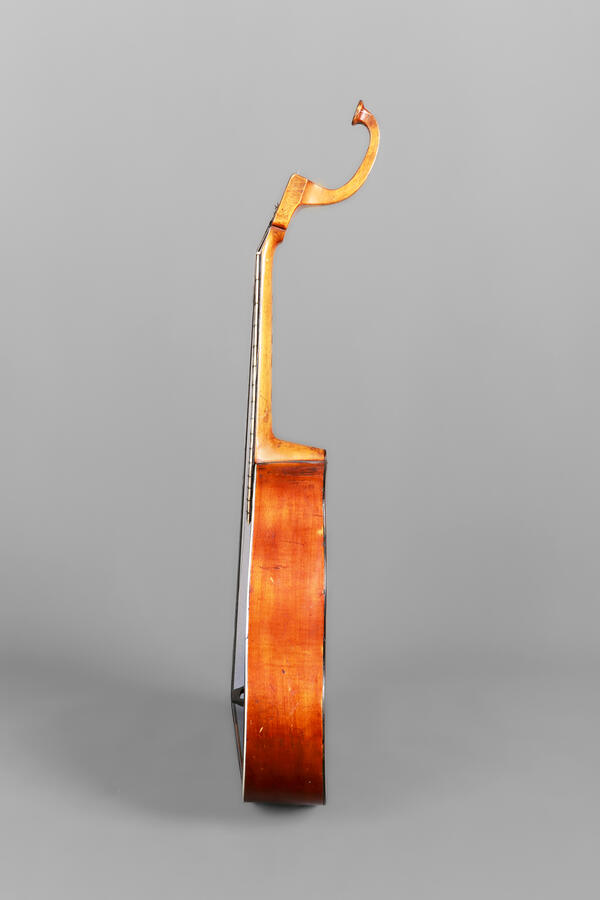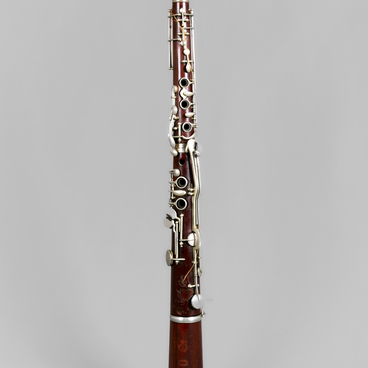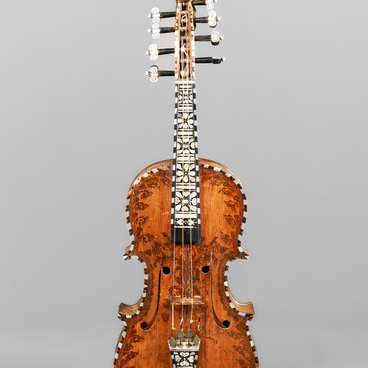The cittern is a plucked string instrument that dates back to the 15th century. During the Renaissance, this lute-family instrument was enjoying great popularity. The cittern was used by troubadours and German burgher musicians known as the Meistersinger. Painters and sculptors often provided detailed images of the cittern in their works.
By the late 18th century, the cittern became popular among the urban population. The lute was more expensive, and only professional musicians could afford it. The cittern was more convenient, easier to play, and more suitable for beginners, but it was eventually superseded by the guitar.
Nowadays, only Spain has a living cittern tradition. The cittern from the museum’s collection was made by the French luthier Gerard Joseph Deleplanque in 1779. Deleplanque worked in Lille in the period between 1754 and 1790.
Gerard Deleplanque made a variety of plucked and bowed string instruments but specialized in making citterns and later guitars. His violas, violins, and cellos were not as highly valued as his citterns, but all of these instruments were also made of perfectly chosen wood and covered with beautiful brownish orange lacquer.
The cittern from the museum’s collection has a pear-shaped body, flat soundboards, and a round sound hole, known as the rose, in the top soundboard. Unlike the lute, where the hole is cut in the soundboard itself, the cittern’s rose was made separately out of hardwood and inserted into the soundboard.
The instrument is richly decorated with mother-of-pearl inlays. The cittern is characterized by its unusually short P-shaped neck. It is cut away along the entire length on the side of the bass strings — most likely, to make it easier to move the left hand while playing. At the top of the neck, there is a sickle-shaped head.
The ebony neck has fifteen fixed frets made of thin brass. They are slightly raised above the neck. The peghead is a comb-like metal plate. Special metal hooks are inserted into the pegbox to fix the strings.
This instrument has four courses of paired strings and three single metal strings. In the days of old, the strings were plucked with a quill as a plectrum, but later musicians abandoned the quill in favor of plucking with the fingers.
By the late 18th century, the cittern became popular among the urban population. The lute was more expensive, and only professional musicians could afford it. The cittern was more convenient, easier to play, and more suitable for beginners, but it was eventually superseded by the guitar.
Nowadays, only Spain has a living cittern tradition. The cittern from the museum’s collection was made by the French luthier Gerard Joseph Deleplanque in 1779. Deleplanque worked in Lille in the period between 1754 and 1790.
Gerard Deleplanque made a variety of plucked and bowed string instruments but specialized in making citterns and later guitars. His violas, violins, and cellos were not as highly valued as his citterns, but all of these instruments were also made of perfectly chosen wood and covered with beautiful brownish orange lacquer.
The cittern from the museum’s collection has a pear-shaped body, flat soundboards, and a round sound hole, known as the rose, in the top soundboard. Unlike the lute, where the hole is cut in the soundboard itself, the cittern’s rose was made separately out of hardwood and inserted into the soundboard.
The instrument is richly decorated with mother-of-pearl inlays. The cittern is characterized by its unusually short P-shaped neck. It is cut away along the entire length on the side of the bass strings — most likely, to make it easier to move the left hand while playing. At the top of the neck, there is a sickle-shaped head.
The ebony neck has fifteen fixed frets made of thin brass. They are slightly raised above the neck. The peghead is a comb-like metal plate. Special metal hooks are inserted into the pegbox to fix the strings.
This instrument has four courses of paired strings and three single metal strings. In the days of old, the strings were plucked with a quill as a plectrum, but later musicians abandoned the quill in favor of plucking with the fingers.





